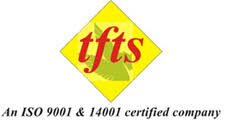
Welding is a fabrication procedure that involves the use of heat or pressure to create a durable joint between two different pieces of material. Depending upon the part and production specifications, industry professionals use different welding techniques to make the desired assemblies. Two of the most common welding methods in use are MIG and TIG welding.
The following blog post by Mr Atul Mahajan Director of Trendsetters Facilities and Technical Services India’s top company for providing outsourced welders in Rudrapur, Siidcul, Dharuhera, Gurgaon, Mahindra SEZ provides a comparison amongst the two, describing what they entail, advantages and disadvantages, materials used, and typical industrial applications.
Types of welding methods
Several techniques and technologies have been formed to optimize the welding procedure for different materials and products, that includes:
- Arc welding: It uses an electrical current to weld metals. Kind of arc welding is metal inert gas (MIG) welding and tungsten inert gas (TIG) welding, among others.
- Friction welding: This melts the bonding and base material using mechanical friction. This procedure can be utilized with thermoplastics and metals.
- Electron beam welding: It uses a stream of electrons for melting materials into a joint. This process should be done in a vacuum and is usually, used for thicker components.
- Laser welding: This is a high-speed procedure that uses a laser to melt and join metals or thermoplastics together.
- Resistance welding: This uses heat-formed between electrodes or rotating wheels to melt and join the base materials. Forms include spot and seam welding.
MIG or TIG which one is best?
MIG and TIG welding works under a similar principle; heat formed by an electrical current melts the base materials or bonding materials, which, while cooled, creates a solid joint. In spite of similarities among the two processes, they stay distinct in their benefits and best utilization cases.
TIG benefits and application
Tungsten inert gas (TIG) is welding is quite versatile, letting industry professionals join a broad range of small and thin materials. It utilizes a non-consumable tungsten electrode to heat the metal and can be utilized with or without a filler.
Compared to MIG it is quite slower, mostly resulting in longer lead duration and greater production expenses. Also, welders need highly specialized training to make certain they reach proper precision and accuracy. However, it also provides greater control during the welding process and forms strong, accurate, and aesthetically pleasing welds.
MIG benefits and application
Metal inert gas (MIG welding is normally used for big and thick materials. It uses a consumable wire that acts as both electrode and filler material.
Compared to TIG, it is a lot faster, resulting in fewer lead times and lower production expenses. Also, it is simpler to learn and forms welds that need small to no cleaning and finishing. Although, its welds are not as accurate, strong, or clean as those created by TIG welding operations.
Materials used in MIG and TIG welding procedures
Both MIG and TIG welding could be used on a broad range of metals, with MIG welding more apt for thick materials and TIG more suited for thin materials. Typical weld materials include aluminum, carbon steel, stainless steel.
Why choose TFTS for your welding needs
At Trendsetters Facilities and Technical Services, you will get certified and best-quality welders for all your plant-related needs.
TFTS’ fully certified welders are well-versed in MIG and TIG welding and accommodate aluminum, carbon steel, and stainless steel materials.



